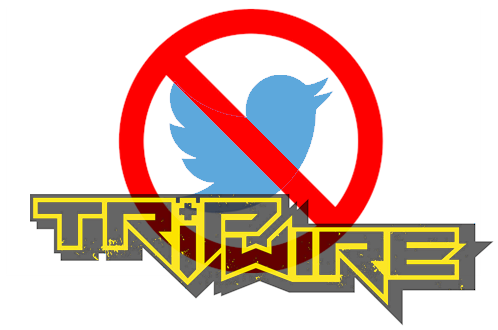Sixty seconds, the time it takes to compose and send an ill-considered tweet could cost you your family, friends, colleagues, and your job.
Here we have a cautionary tale of Video Game CEO John Gibson who was forced to leave his position at Roswell, Georgia-based Tripwire Interactive, an entertainment software developer and publisher, over a tweet apparently supporting a position on the newly-enacted Texas Heartbeat Act.
The September 6, 2021 Announcement...
Tripwire Appoints new Interim CEO, Alan Wilson, as Company Moves Forward
The comments given by John Gibson are of his own opinion, and do not reflect those of Tripwire Interactive as a company. His comments disregarded the values of our whole team, our partners and much of our broader community. Our leadership team at Tripwire are deeply sorry and are unified in our commitment to take swift action and to foster a more positive environment.
Effective immediately, John Gibson has stepped down as CEO of Tripwire Interactive. Co-founding member and current Vice President, Alan Wilson, will take over as interim CEO. Alan has been with the company since its formation in 2005 and is an active lead in both the studio’s business and developmental affairs. Alan will work with the rest of the Tripwire leadership team to take steps with employees and partners to address their concerns including executing a company-wide town hall meeting and promoting open dialogue with Tripwire leadership and all employees. His understanding of both the company’s culture and the creative vision of our games will carry the team through this transition, with full support from the other Tripwire leaders.
The September 4, 2021 tweet...
"Proud of #USSupremeCourt affirming the Texas law banning abortion for babies with a heartbeat. As an entertainer I don’t get political often. Yet with so many vocal peers on the other side of this issue, I felt it was important to go on the record as a pro-life game developer."
Condemned by social media, company employees, vendors, and others...
Norcross, Georgia-based Shipwright Studios, a game collaborator and co-developer commented,,,
While your politics are your own, the moment you make them a matter of public discourse you entangle all of those working for and with you. We have worked closely alongside the talented and passionate developers at Tripwire and your partners for the last 3+ years.
We know it is difficult for employees to speak up or act out in these scenarios, and they may not feel comfortab·le to speak their minds.
It is regrettable, but we feel it would be doing ourselves, your employees, your partners, and the industry as a whole a disservice to allow this pattern to continue without comment.
We started Shipwright with the idea that it was finally time to put our money where our mouth is. We cannot in good conscience continue to work with Tripwire under the current leadership structure. We will begin the cancellation of our existing contracts effective immediately.
Is it a matter of self-censorship or survival?
You should always differentiate between your personal and professional life. Professionally the answer should always be, even in the face of intense media and peer pressure, the objective of the company is to do [business mantra here] and I do not comment on areas outside of growing our business for the benefit of our customers, investors, employees, vendors, and our community.
Change is coming. There will always be a tomorrow, no matter how much you may try to ignore it. There are no guarantees in life or promises for a bright future. Just because something bad hasn't happened yet, doesn't mean it won't. It can happen to anyone, anytime, anywhere. No one is guaranteed to wake up tomorrow and still have a job by evening. Are you now wondering, Am I Next?



